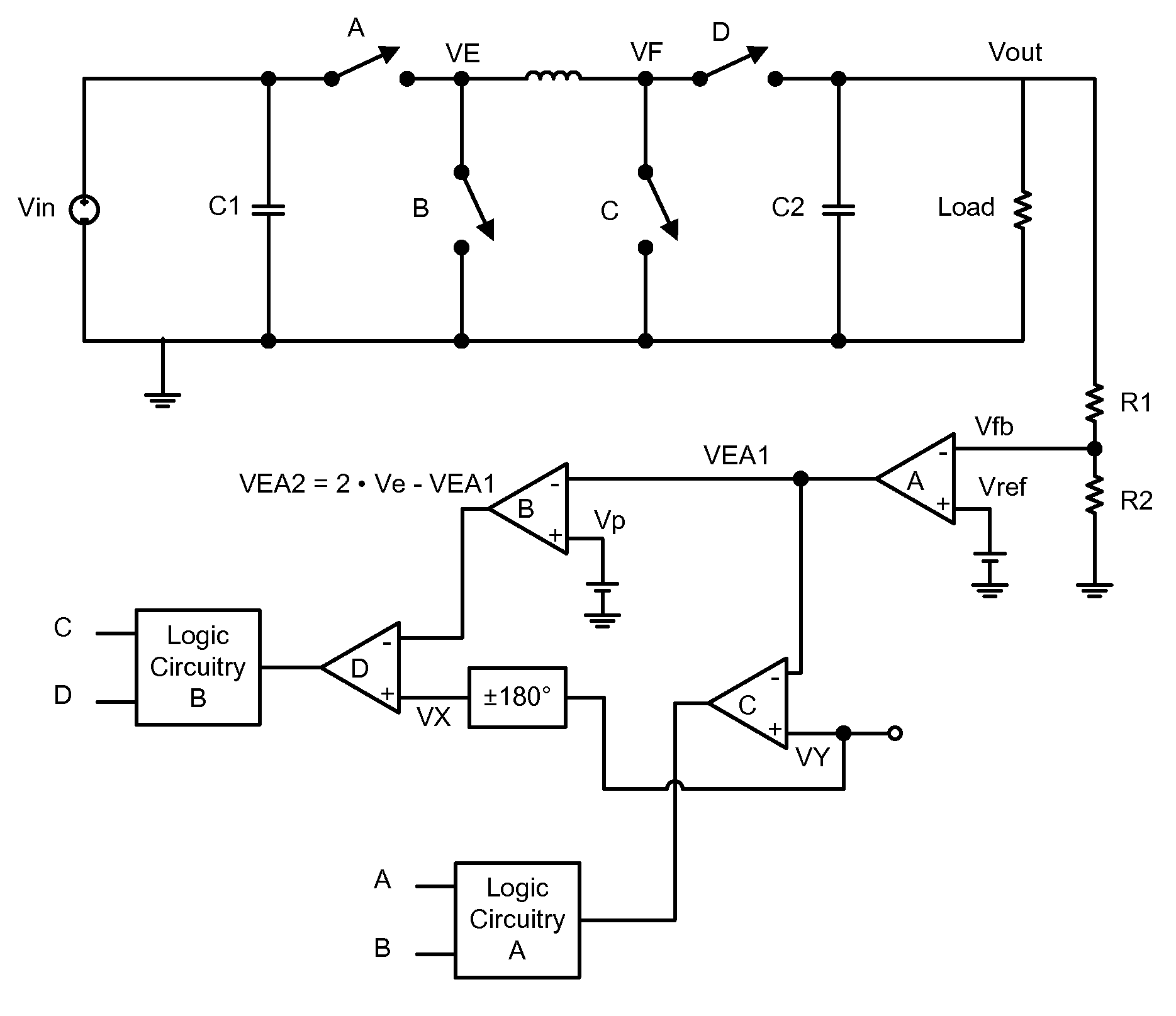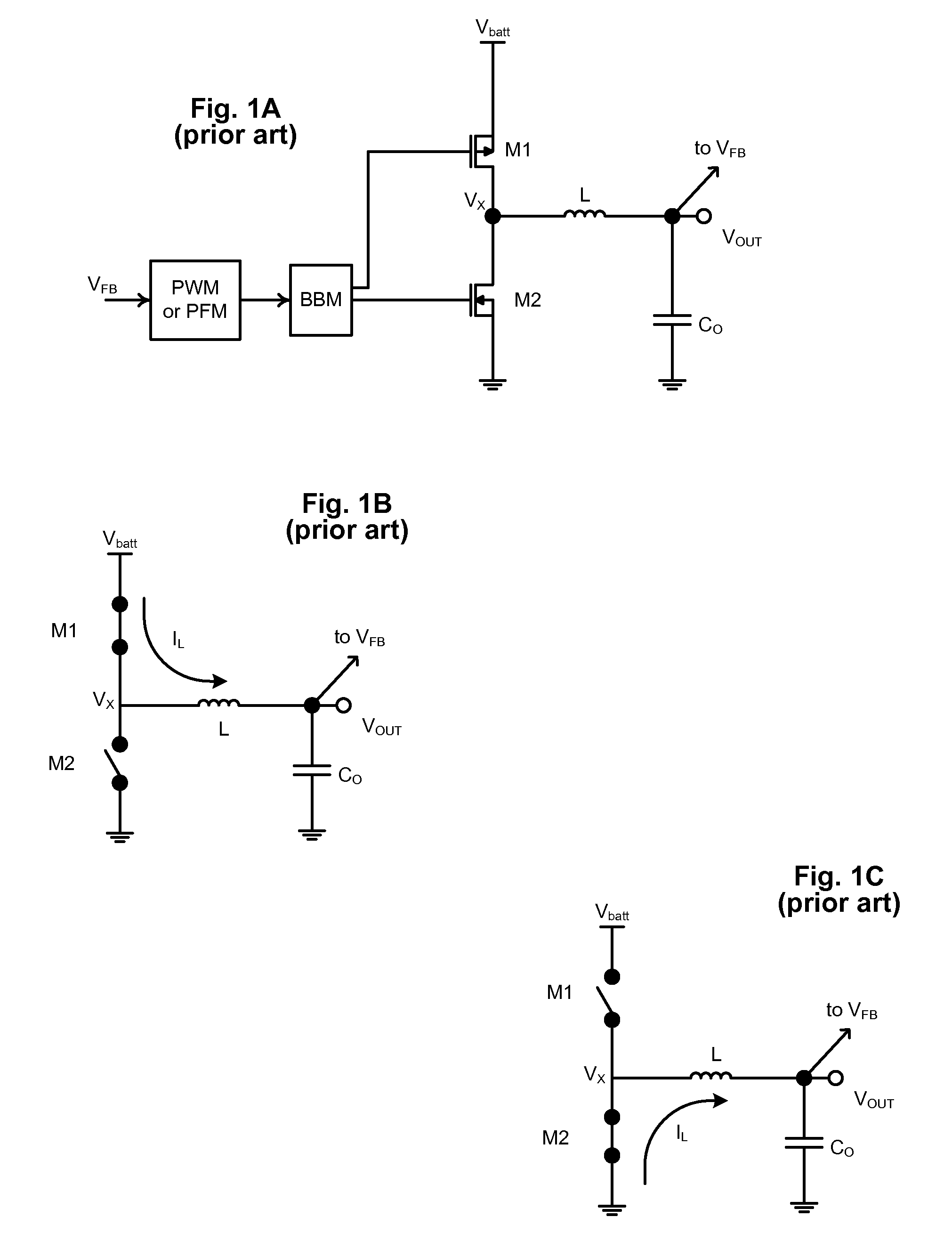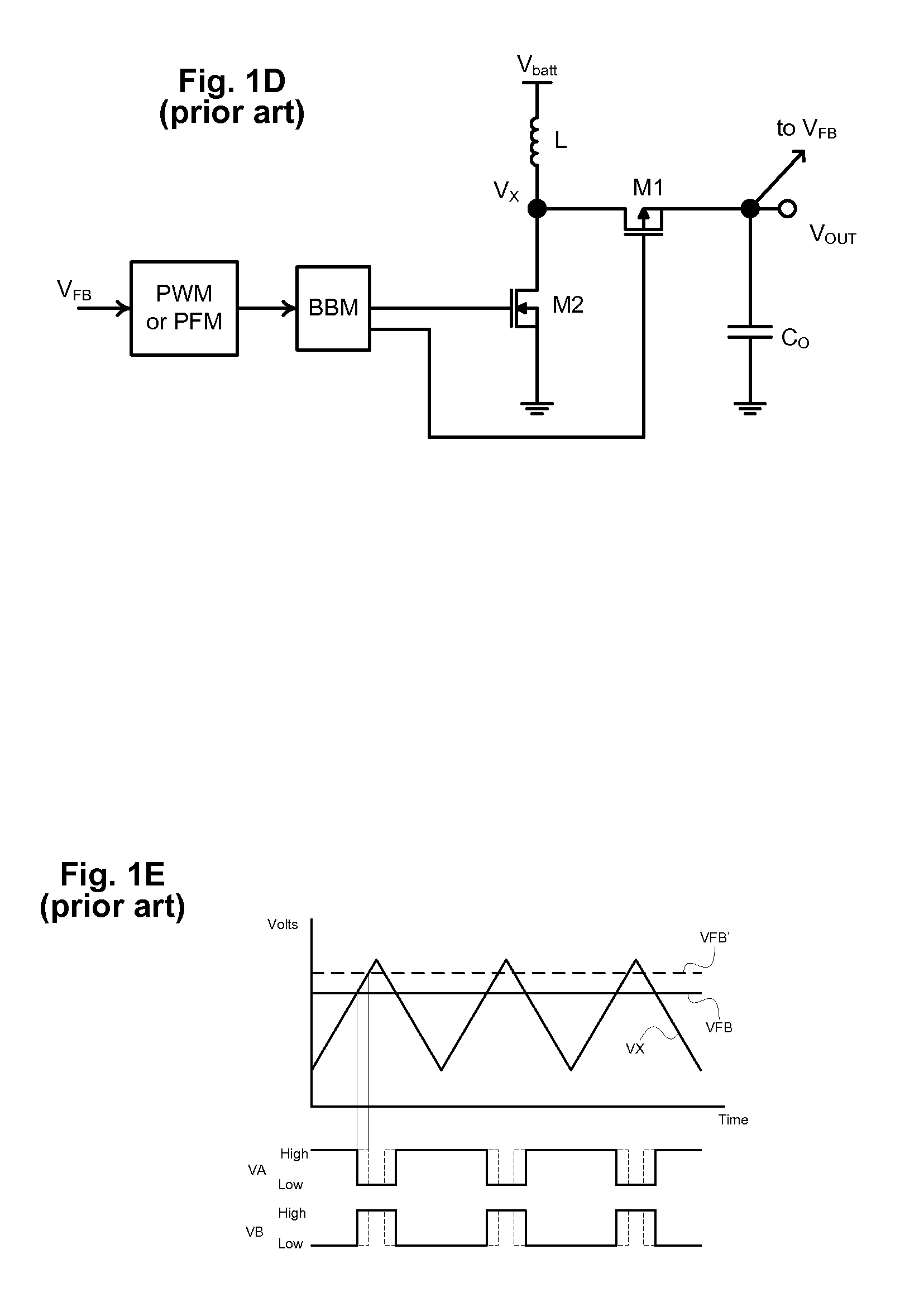Buck-Boost Switching Voltage Regulator
- Summary
- Abstract
- Description
- Claims
- Application Information
AI Technical Summary
Benefits of technology
Problems solved by technology
Method used
Image
Examples
Embodiment Construction
[0029]An embodiment of the present invention includes a Buck-Boost voltage regulator. As shown in FIG. 2, a representative implementation of this regulator includes four switches labeled A, B, C and D. Typically, these switches are MOSFET devices with A and D being PMOS devices and B and C being NMOS devices. It should be appreciated however, that other technologies and device types may be used. Switch A is connected between an input supply (labeled Vin) and a node VE. Switch B is connected between the node VE and ground. An inductor (labeled L) connects the node VE to a node VF. Switch C is connected between the node VF and ground. Switch D connects the node VF to an output node Vout. A load (represented by a resistor) connects the output node to ground. Two capacitors are included. The first or input capacitor is connected between the input voltage and ground. The second or output capacitor is connected between the output node (Vout) and ground. The two capacitors are labeled C1 a...
PUM
 Login to View More
Login to View More Abstract
Description
Claims
Application Information
 Login to View More
Login to View More - R&D
- Intellectual Property
- Life Sciences
- Materials
- Tech Scout
- Unparalleled Data Quality
- Higher Quality Content
- 60% Fewer Hallucinations
Browse by: Latest US Patents, China's latest patents, Technical Efficacy Thesaurus, Application Domain, Technology Topic, Popular Technical Reports.
© 2025 PatSnap. All rights reserved.Legal|Privacy policy|Modern Slavery Act Transparency Statement|Sitemap|About US| Contact US: help@patsnap.com



